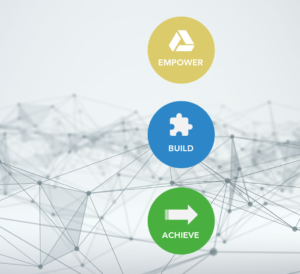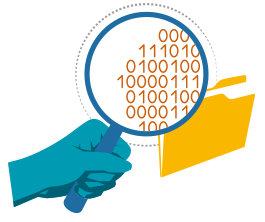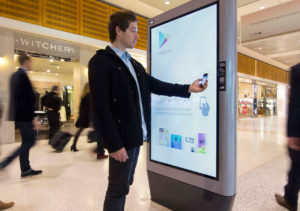 Lately I’ve been thinking – what is the future of consumer data with GDPR in effect? How will the media and advertising landscape continue to evolve to meet its own insatiable appetite for information?
Lately I’ve been thinking – what is the future of consumer data with GDPR in effect? How will the media and advertising landscape continue to evolve to meet its own insatiable appetite for information?
The implementation of GDPR meant brands had to let go of massive piles of data as the door was closed on multiple data streams. This was music to consumers’ ears.
A combination of being bombarded by poorly targeted advertising and being enlightened to a number of data handling scandals led to a dramatic loss of trust. Facebook and Cambridge Analytica became dinner table conversation, blurring the line between industry and national news, while consumers became savvier in their approach to handing over personal information.
At the face of it, GDPR sounded like a sucker punch for brands and publishers alike. But, while not perfect, it was a step in the right direction and presented an opportunity that was beneficial for both themselves and consumers if handled in the right way.
Building foundations and thinking outside the box
 First and foremost, businesses need to rebuild consumer trust by earning the right to their data. Transparency is key. Ultimately, the aim always has to be to provide a willing user with personalised and engaging content on any device.
First and foremost, businesses need to rebuild consumer trust by earning the right to their data. Transparency is key. Ultimately, the aim always has to be to provide a willing user with personalised and engaging content on any device.
To do this, advertisers and media owners understand they must make the most of the data foundations they have remaining. DMPs (Data Management Platforms) and CDPs (Consumer Data Platforms) can make sense of their various streams of data, drawing out genuine insights into their target markets to provide consumers with data-driven experiences that they value.
They must also think of clever and open ways to tap into the minds and paths of their potential customers using the knowledge they have about them.
Connected cocktail glasses, personalised audio ads, galore
Experiential and personalised marketing is the golden ticket to rebuilding trust, creating enjoyable, memorable experiences for the consumer. If brands or publishers create such experiences, consumers directly witness the value of sharing their data. In other words, they get something back.
 For example, Pernod Ricard is already experimenting with its data-tracking connected cocktail glasses. When in a bar, in exchange for their name, address, country and preferred cocktail, consumers are able to place an order by scanning the glass with their smartphone. When at home, the app uses the device’s location to provide consumers with tailored cocktail recipes. Those who sign up for this service also receive exclusive invitations to one-off events and product news.
For example, Pernod Ricard is already experimenting with its data-tracking connected cocktail glasses. When in a bar, in exchange for their name, address, country and preferred cocktail, consumers are able to place an order by scanning the glass with their smartphone. When at home, the app uses the device’s location to provide consumers with tailored cocktail recipes. Those who sign up for this service also receive exclusive invitations to one-off events and product news.
Meanwhile, Channel 4 is making use of its first-party data from a database of 15 million consenting users to incorporate the individual name of the viewer into the audio of their ads. For the first time, advertisers can genuinely speak to their audience.
If brands and media owners want to earn the right the right to data and genuinely engage consumers, they need to embrace this innovative approach, and just as importantly, learn how to manage their new data as it comes through.
What will come next?
 Connected out of home will open up many data streams for brands. It won’t just be about how to reach a specific audience, but how the audience’s responses can be used to ensure a coherent messaging strategy is delivered across other channels. For instance, if a consumer interacts with a digital ad on the tube, this will be ingested back into the brand’s data stores and used to improve their experience later down the line, for example via a mobile ad.
Connected out of home will open up many data streams for brands. It won’t just be about how to reach a specific audience, but how the audience’s responses can be used to ensure a coherent messaging strategy is delivered across other channels. For instance, if a consumer interacts with a digital ad on the tube, this will be ingested back into the brand’s data stores and used to improve their experience later down the line, for example via a mobile ad.
I’m not the first and certainly won’t be the last to say that voice recognition, virtual reality and augmented reality will all be really exciting technologies to watch for aesthetic reasons. But from the perspective of those managing the data, it will also be interesting to see how these forms of tech lead to entirely new streams of insights and how the industry will work to understand how to store and handle all of it.
 That being said, in the not-so-distant future I am confident we’ll see Apple or Google release a first real mass-consumer augmented reality device which will have a profound effect on the way we consume media and the entire world of advertising and information as we know it.
That being said, in the not-so-distant future I am confident we’ll see Apple or Google release a first real mass-consumer augmented reality device which will have a profound effect on the way we consume media and the entire world of advertising and information as we know it.
As an industry we’re only just becoming accustomed to individuals using AR and the data we can gain off the back of this, just imagine the terabytes we would receive from an AR world where millions interact with each other every second.
Skillsets are key
 With new regulations and tech in the mix, there are many opportunities on the horizon for brands and publishers. As a result we are seeing a rise in the need for highly specialised and skilled data scientists and this will continue as other regulations such as the ePrivacy directive comes into play.
With new regulations and tech in the mix, there are many opportunities on the horizon for brands and publishers. As a result we are seeing a rise in the need for highly specialised and skilled data scientists and this will continue as other regulations such as the ePrivacy directive comes into play.
The most important thing to remember is that with the right data experts in place, brands and publishers will be armed to face whatever data obstacle they come to face.
Article by Umberto Torrielli, Co-Founder, SBDS.
 About Umberto:
About Umberto:
Umberto Torrielli is Co-founder and Managing Partner at SBDS, the pioneers of the DataTech services sector, helping businesses realise the full potential of their customer data.
Umberto is a DataTech leader with extensive experience in the including architecting technical implementations & SaaS onboarding, strategic consulting, ad operations management, content monetization, new business development, and data driven strategy.
Source: SBDS

You must be logged in to post a comment Login